Anglo-Karachai

Intro
A type of the Kabardas horse that is bred specifically in the Karachai republic. These animals tend to be of the most robust type of Kabardas horse and split off as their own breed during the 1960′s. The introduction of Thoroughbred blood was what created the Anglo-Karachai horse.
Origins
This is a Russian breed originated by crossing English, German and French Thoroughbreds with local Karachai animals. The breeding unofficially started in the early 1870′s, but it wasn’t until the mid 20th century before the breed took hold.
Features
Average height 15.2 – 16 hands
Possesses an easy, well-balanced gait
Possesses an easy, well-balanced gait
Physique
A slight ‘ram’s head’ facial profile
Straight line back
Well muscled loin, a lovely sloped croup with a low set flowing tail
Neck is long with very oblique shoulders (although shoulder position varies depending on how high the Thoroughbred breed-share is)
The foundation is strong, with well anchored limbs
Straight line back
Well muscled loin, a lovely sloped croup with a low set flowing tail
Neck is long with very oblique shoulders (although shoulder position varies depending on how high the Thoroughbred breed-share is)
The foundation is strong, with well anchored limbs
Colors
All colors
Use
Saddle horse
Pleasure horse
Pleasure horse
Temperament
Calm and collected these animals are ready to work with incredible direction capacity.
Anglo-Kabarda
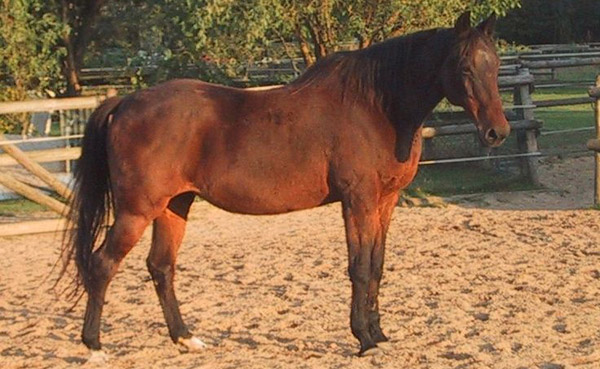
Intro
The Anglo-Kabarda is a cross between Thoroughbred and Kabarda bloodlines. To be registered they must be no less than 25% and no more than 75% Thoroughbredblood.
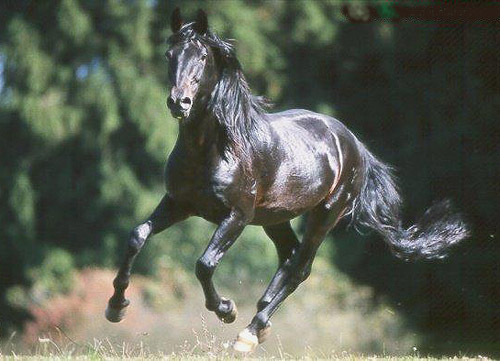
Origins
Created in regions of Caucasus in Russia by crossing Kabarda (or Kabardin) mares with Thoroughbred stallions.
The best of this breed retains the size and speed of the Thoroughbred and the endurance and adaptability of the Kadarba. They are used for everything from cavalry mounts to farm horses.
These animals are raised in herds, have a long life-span and are very protective of each other.
Features
Average height 15.2 – 16 hands
Medium sized horse
Medium sized horse
Physique
Kabarda head with roman nose profile
Straight back
Long legs and well-developed joints
Straight back
Long legs and well-developed joints
Traditional Colors
Found in most solid colors
Temperament
Reliable and true
Brave and energetic
Brave and energetic

Use
Show horse
Working horse
Farm horse
Riding horse
Working horse
Farm horse
Riding horse
Anglo-Arabian
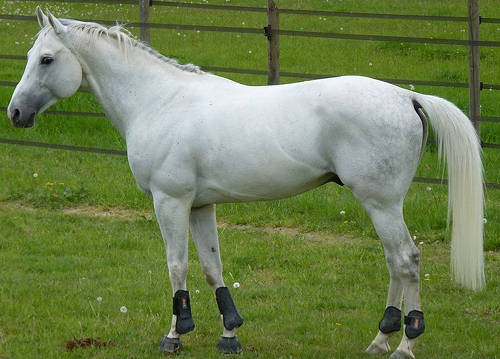
Intro
An Anglo-Arabian is is a Thoroughbred crossed with an Arabian and either parent can be a member of either breed (or another cross). However the remaining offspring must have no more than 75% and no less than 25% Arabian blood.

Origins
The breed was originally bred in France in 1836 under the care of the French National Stud Service, although the Thoroughbred and Arabian bloodlines are closely related and have been crossed before.
The finest examples of the breed combine the endurance and refinement of theArabian with speed and stature of the Thoroughbred. Ideally the breed displays more of an Arabian type confirmation, however they should show the best of both breeds
Features
Average height 15.2 – 16.3 hands
Size and confirmation varies because of the many different crosses
Often taller and less refined than the average Arabian
Strong and correct action
Springy jumper
Size and confirmation varies because of the many different crosses
Often taller and less refined than the average Arabian
Strong and correct action
Springy jumper
Physique
Chiseled and refined head, not overly dished in the profile
Long slightly arched neck
Short, strong body with a deep barrel
Legs are long and strong
Long slightly arched neck
Short, strong body with a deep barrel
Legs are long and strong
Traditional Colors
Temperament
Intelligent and high energy
Built for speed and endurance, a great competition horse
Tough and always willing to go
Built for speed and endurance, a great competition horse
Tough and always willing to go
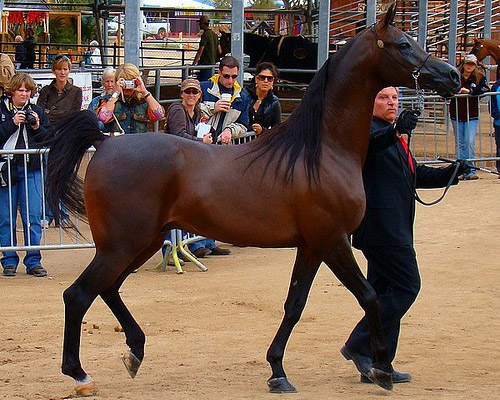
Use
Sport horse
Eventing horse
Racing horse
Pleasure riding horse
Eventing horse
Racing horse
Pleasure riding horse
Helpful Links
*All links open in a new window
North American Anglo-Arabian Horse Association
Anglo-Arabians
Arabian Horse Association
North American Anglo-Arabian Horse Association
Anglo-Arabians
Arabian Horse Association
Anglo-Arabian Studs
Video
Andravida
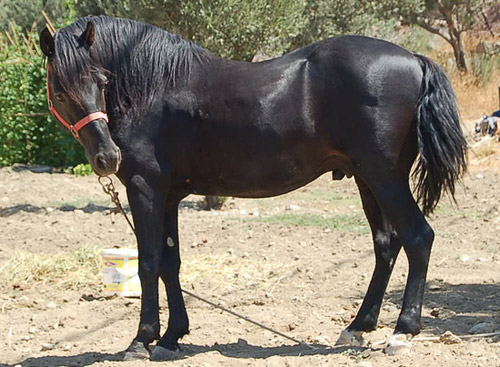
Intro
Also called the Eleia, Ilia, or Greek, little is known about the Andravida which is a very rare light draft breed found in the region of Ilia, Greece.
Origins
Their ancestors were cavalry horses used by the Athenians in the fourth century BC. Later, in the seventh century BC the Greek cavalry used the Andravida as a war mount as well.
During the 13th to 15th centuries Arabian blood was used to refine the stock which created the lighter animal known today.
Traditionally, this breed is not bred outside of the area of Ilia, which is the main reason the horse is so rare today.
Features
Average height 14 – 16 hands
Large, strong horse
Large, strong horse
Physique
Unremarkable head
Chest is deep and muscular
Legs are stocky and powerful
Chest is deep and muscular
Legs are stocky and powerful
Traditional Colors
black | chestnut | bay | dun | palomino & buckskin
Temperament
Strong and willing draft type
Use
Riding horses
Work animals
Transportation
Work animals
Transportation
Andean
Intro
A type of Peruvian national horse, the Andean habitat is found above 9,000 feet in the Andes mountains. The great altitude has created an animal with amazing lung capacity and a thick, dense coat of fur.
Origins
The breed developed in the harsh environment of the Andes mountains and displays characteristics reminiscent of the Tibetan breed.
Features
Average height 12 – 13.2 hands
Strong and able climber
Knows instinctively which plants are safe for it to eat
Resistant to fatigue
Strong and able climber
Knows instinctively which plants are safe for it to eat
Resistant to fatigue
Physique
Head is heavy and subconvex
Forehead protrudes around the eyes
Neck is short and muscular
Skin is thick and coat is heavy
Pasterns are short and straight
Hooves are small, dark with high heels
Forehead protrudes around the eyes
Neck is short and muscular
Skin is thick and coat is heavy
Pasterns are short and straight
Hooves are small, dark with high heels
Traditional Colors
Temperament
Tough as can be and willing to work
Use
Pack animal
Riding horse
Riding horse
Andalusian Horse
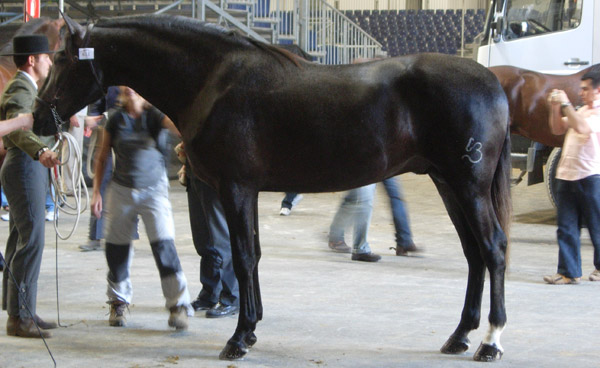
Intro
The Andalusian is right up there with the Arabian when it comes to purity and length of bloodline. The grandfather of horse breeds, the Andalusian blood influences almost every breed known today.
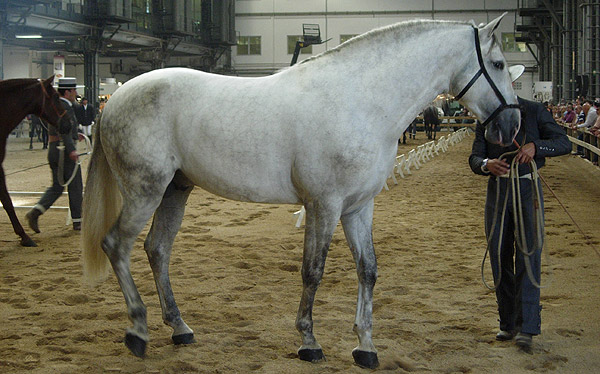
Origins
The Andalusian horse is known by many different names Iberian Saddle / War horse,Jennet, Lusitano, Alter Real, Carthusian, Spanish Horse, Portuguese, Peninsular &Castilian. They are officially known as the Purebred Spanish Horse and have long been considered to embody perfection when it comes to horseflesh.
Their roots (and convex profile) are likely to have come from Asian blood influence prior to the Muslim invasion of the Iberian peninsula. Some believe that the Barbblood was what created the roman nose of this breed, however Iberian horses displayed their grand profile centuries before the Barb horses came to be.
Pure Spanish blood infuses animals with a graceful and noble presence. When introduced to other breeds, they markedly improve stock and their strong qualities persist throughout generations.
The breeding began and is still taken very seriously in the region of Andalusia, Spain. The purest strains were bred at the Carthusian monestary near the coast of Jarez de la Frontera.
Features
Average height 15.1 – 15.3 hands
Athletic with a strong presence
Elegant springy action
High degree of flexion possible in hind legs
Athletic with a strong presence
Elegant springy action
High degree of flexion possible in hind legs
Physique
Large sculpted head with convex profile
Bright eyes & a kind expression
Elegant arched neck
Deep, short-coupled body
Strong round hindquarters
Short cannon bones
Flowing mane and tail
Bright eyes & a kind expression
Elegant arched neck
Deep, short-coupled body
Strong round hindquarters
Short cannon bones
Flowing mane and tail
Traditional Colors:
Temperament
Intelligent
Affectionate
Courageous
Spirited
Affectionate
Courageous
Spirited
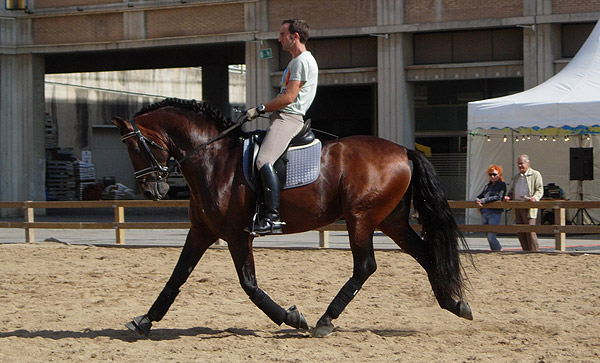
Use
General riding
Show horses
Performance animals
Show horses
Performance animals
Helpful Links
* All links open in a new window
International Andalusian & Lusitano Horse Association
Northwest Andalusian Horse Association
International Andalusian & Lusitano Horse Association
Northwest Andalusian Horse Association
Where to Buy
Andalusian Studs
Video
Anadolu Pony
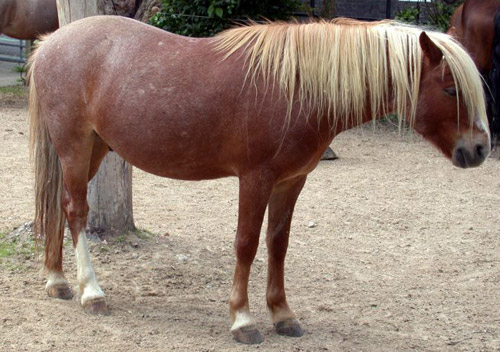
Intro
Also called Native Turkish Pony or Turk, this pony is the most common Turkish breed & are known for their speed, endurance and robust nature.
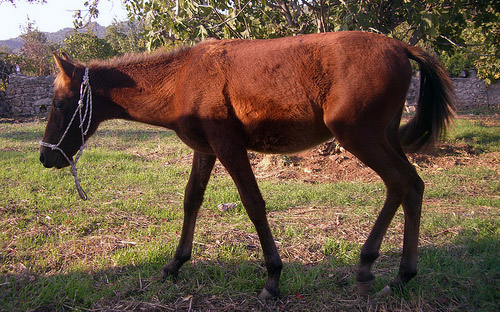
Origins
The Anadolu breed comes from Turkey and draws on the blood of several breeds of ancient times such as Arabian and Akhal-Teke. Their bloodlines are ancient in their own right.
Features
Average height 12.1 – 13.3 hands
Small horse with great strength and endurance
Small horse with great strength and endurance
Physique
Head is small and can be refined, both convex and concave profiles
Ears are set low
Withers are low and chest is narrow
Ears are set low
Withers are low and chest is narrow
Traditional Colors
Found in most common colors
Temperament
Mild mannered and easy to care for
Can survive in poor conditions
Strong and true
Can survive in poor conditions
Strong and true
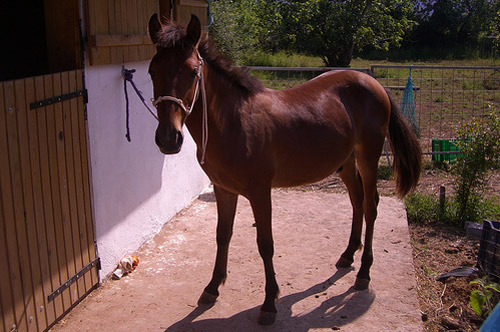
Use
Pack horse
Riding horse
Riding horse
Amur
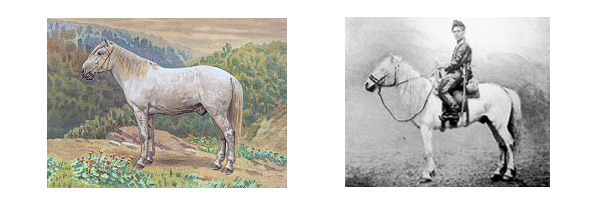
Intro
The Amur is an early 19th century light horse from Siberia that is now extinct.
Origins
Their bloodlines were a combination of the Transbaikal (Buryat) and the Tomsk heritage and they were bred for riding. The Amur was a hardy & strong breed with a finer conformation than many found in colder northern regions.
Physique
Short, thick neck and medium length back with a well-rounded croup.
Their foundation was firm with good tractive power.
Mane and tail were thick and long.
Their foundation was firm with good tractive power.
Mane and tail were thick and long.
Their Demise
The breed became extinct due to crossing with many of the Russian breeds, Orlov Trotters, Russian Don, and Budyonny.

No comments:
Post a Comment